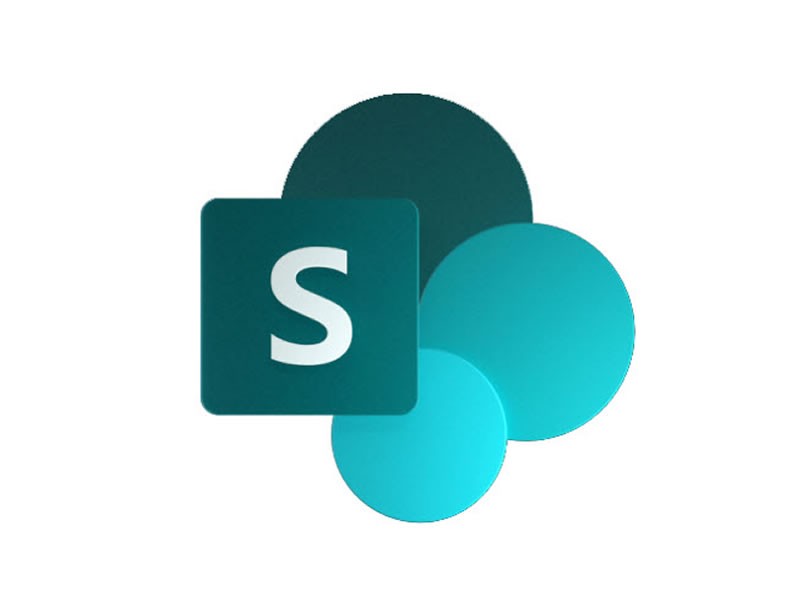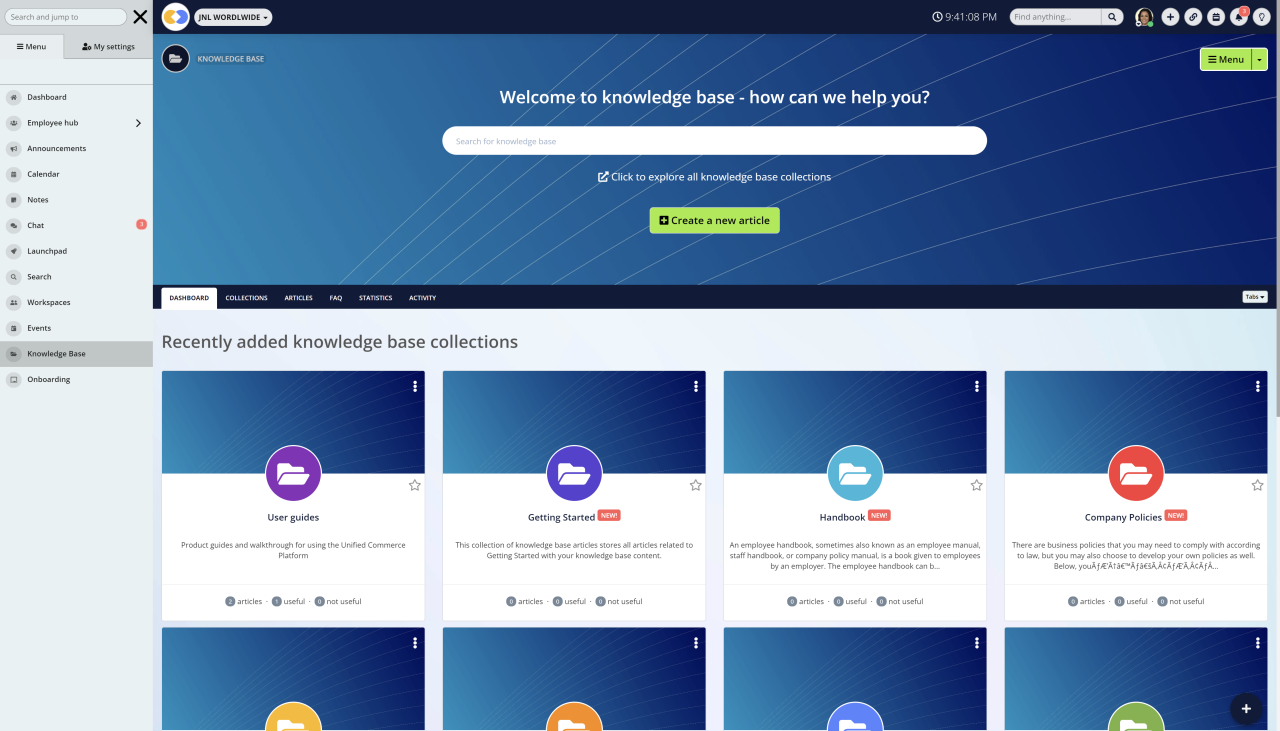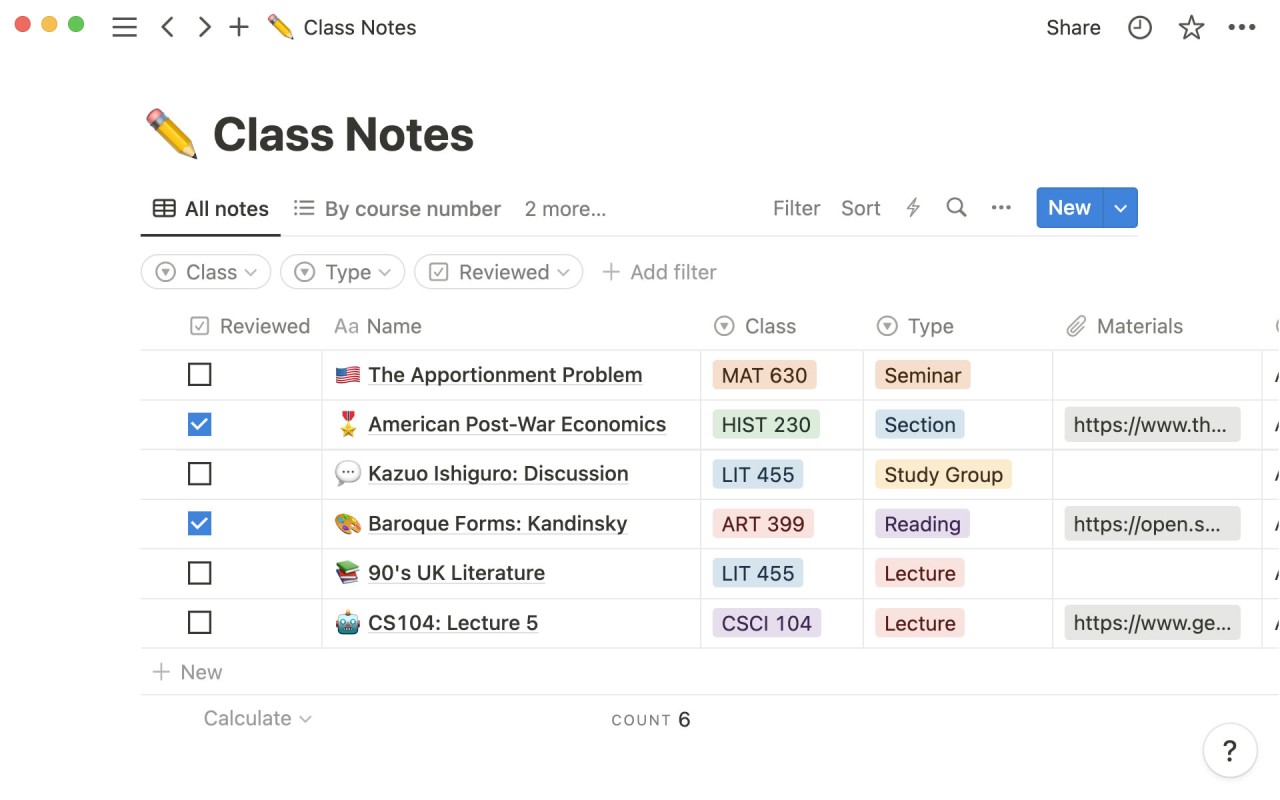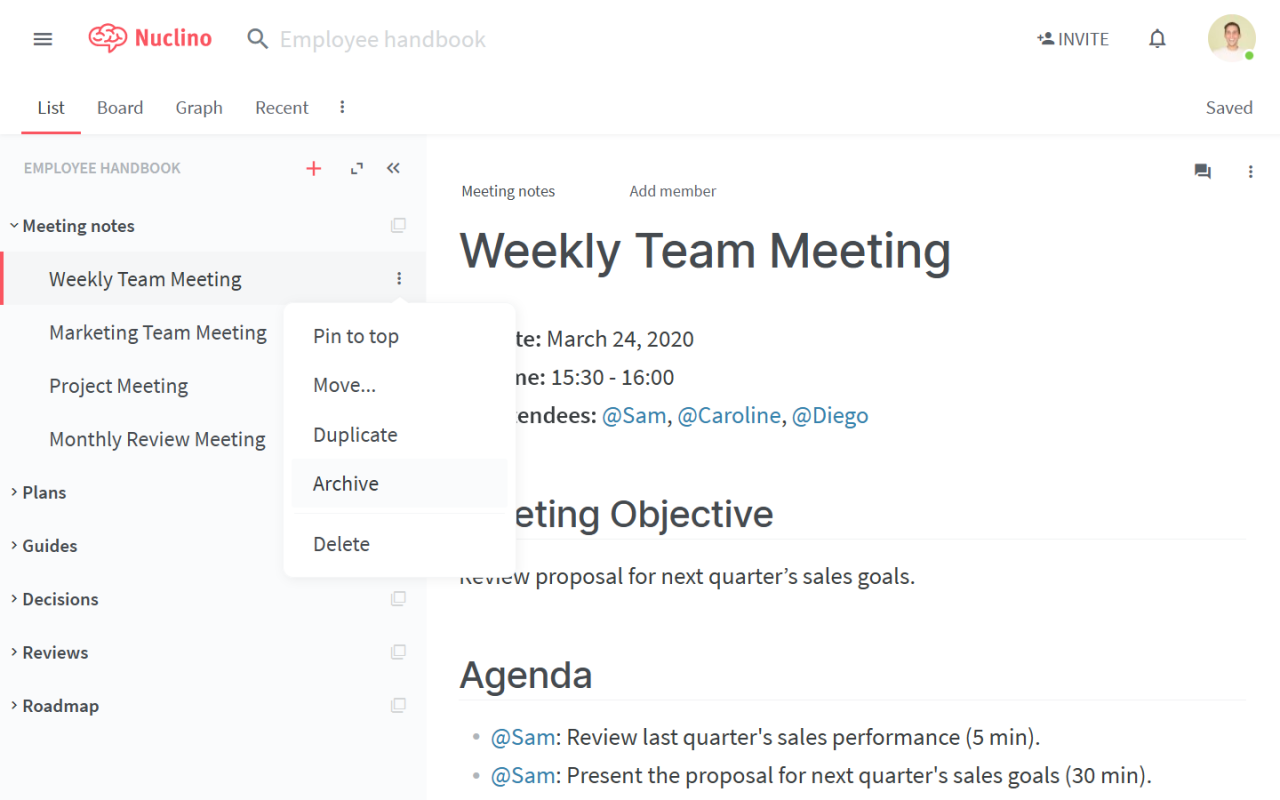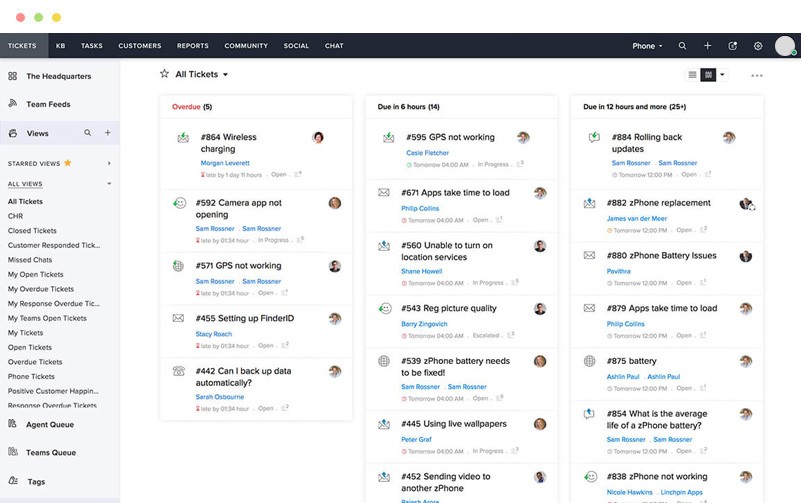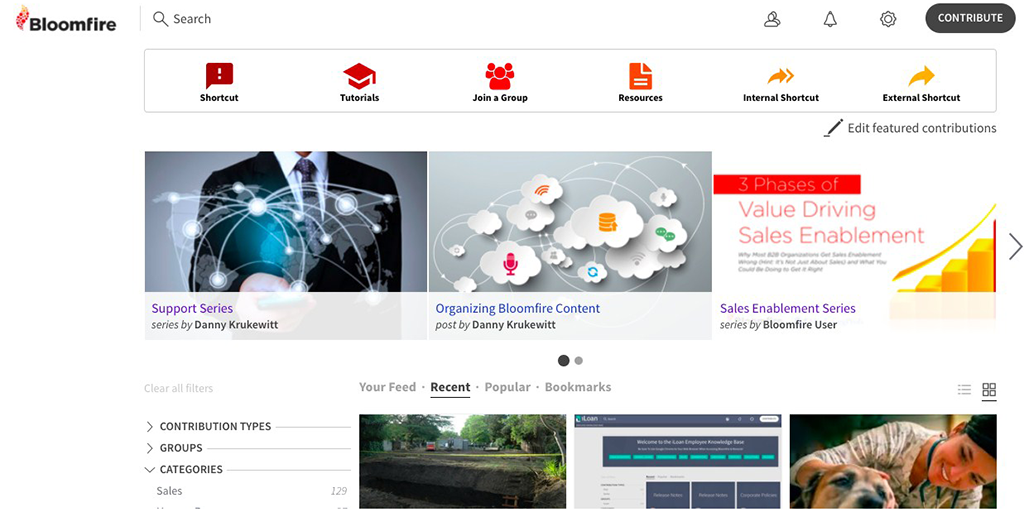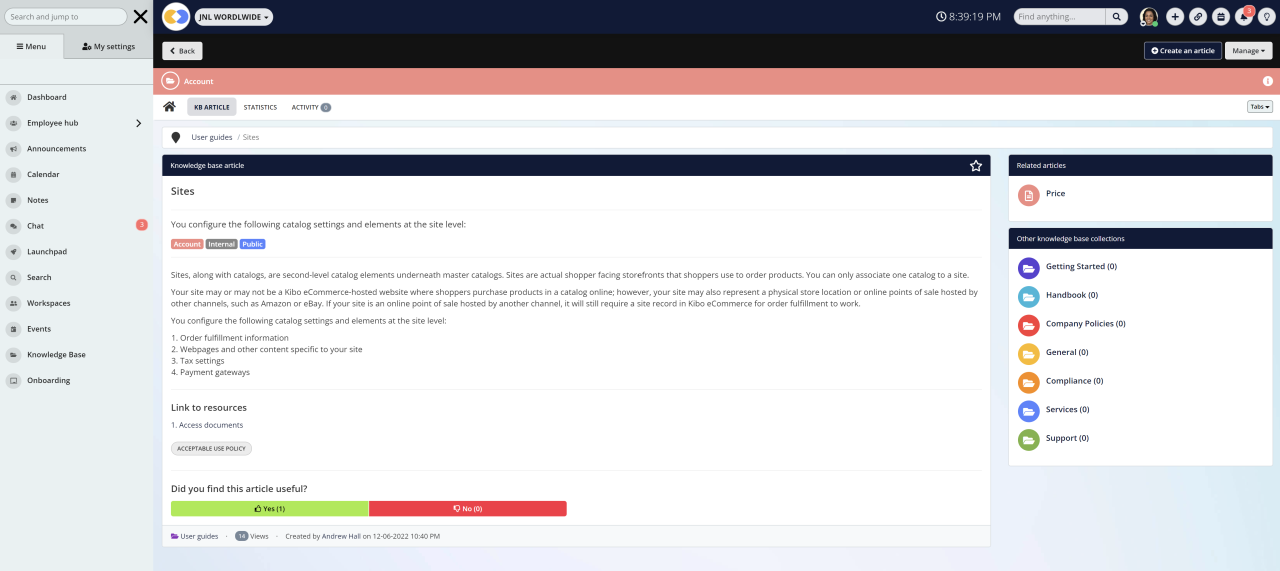Insight Blog
Agility’s perspectives on transforming the employee's experience throughout remote transformation using connected enterprise tools.
26 minutes reading time
(5199 words)
Confluence vs Sharepoint: Best for Knowledge Management 2024?
Explore the comprehensive guide to knowledge base and we compare Confluence vs Sharepoint.
Effective knowledge management is paramount for companies striving to maintain a competitive edge and foster innovation in today's dynamic business landscape.
In this ever-evolving digital era, platforms like Confluence vs Sharepoint have emerged as indispensable tools, each with its unique set of features designed to enhance collaboration and streamline knowledge management processes.
Over time, both Confluence and SharePoint have proven to be stalwarts in empowering businesses with the necessary tools to facilitate seamless collaboration and efficient knowledge sharing. However, beneath the surface, these platforms harbor distinctive characteristics that set them apart.
This blog post delves into a comprehensive comparison and contrast between Confluence and SharePoint, particularly in the context of knowledge management. By exploring their strengths, weaknesses, and specific functionalities, we aim to provide a nuanced understanding of how these platforms operate.
We will touch upon Confluence vs Sharepoint and alternative solutions that businesses may consider to meet their knowledge management needs effectively.
Join us on this exploration to make informed decisions about the tools that best align with your organization's goals and aspirations.
What Is a Knowledge Base?
To begin, let's establish the definition of a "knowledge base."
A knowledge base serves as a self-serve customer service library containing information about a product, service, or topic. Its purpose is to assist customers in finding answers independently, enabling them to resolve issues on their own. An example is illustrated in the HubSpot knowledge base homepage.
There are two primary types of knowledge bases: machine-readable and human-readable.
Machine-readable knowledge bases store data specifically designed for analysis by artificial intelligence systems. These solutions are interpreted and deduced by machines, resulting in less interactive interfaces. On the other hand, human-readable knowledge bases store documents and physical texts accessible to humans. These are more interactive and hands-on but may require time-consuming prompts to arrive at solutions.
The significance of knowledge cannot be overstated, with a substantial 74% of organizations acknowledging that the implementation of effective knowledge management practices leads to a notable boost in company productivity, ranging from 10% to an impressive 40%. This underscores the pivotal role that a well-structured approach to knowledge management plays in enhancing overall organizational efficiency and performance.
What type of data is included in a knowledge base?
All knowledge bases serve the essential function of imparting valuable information to both customers and prospects. The specific type of data and information incorporated into a knowledge base is contingent upon the business's purpose for establishing one.
The common types of data found in a knowledge base include:
- Directions and Tips for Product and Service Usage: Providing comprehensive guidance on how customers can effectively utilize products and services ensures a smoother user experience and fosters customer satisfaction.
- FAQ Answers: Inclusion of frequently asked questions and their corresponding answers aids users in swiftly resolving common queries, enhancing self-service capabilities.
- In-Depth Solution Content: Creating content that delves into intricate solutions ensures that users have access to comprehensive information, promoting a deeper understanding of your offerings.
- Video Demonstrations: Supplementing textual information with video demonstrations enhances engagement and comprehension, catering to diverse learning preferences among users.
- Company Information: Incorporating details about the company's background, mission, and values contributes to establishing a transparent and trustworthy relationship with customers.
- Knowledge on Different Business Departments: Providing insights into various business departments fosters a holistic understanding of the organization, enhancing the user's overall knowledge and perception.
Some businesses extend the scope of their knowledge bases beyond specific customer needs by creating content beneficial to general consumers in the industry. This approach not only imparts useful information but also broadens the audience reach, potentially converting industry enthusiasts into customers.
Additionally, businesses can implement internal knowledge bases to disseminate valuable information to employees, covering topics such as benefits information, company holidays, and more. This internal resource contributes to organizational efficiency and employee satisfaction.
While knowledge bases may seem simple at first glance, placing the concept in context reveals their multifaceted role in catering to diverse informational needs and enhancing user experiences.
Types of Knowledge Base Software
Documentation plays a crucial role across various domains, serving as a valuable resource for users, employees, and customers alike.
- Software Documentation: Essential for users navigating software systems, this documentation encompasses installation guides, troubleshooting materials, feature guides, and onboarding resources, aiding users in effectively utilizing the software.
- Product Documentation: Companies offering products requiring assembly or usage instructions benefit from product documentation, which educates users on product functionality, minimizing the necessity for customer support interactions.
- User Manual: Structured like a navigable book, a user manual serves as a comprehensive guide for customers to understand and operate products and services.
- FAQ Pages: Frequently Asked Questions (FAQ) pages on company websites empower customers to find quick answers, reducing the reliance on customer support teams.
- Troubleshooting Guide: Addressing common product issues, a troubleshooting guide assists customers by offering diagnostic approaches and suggested solutions.
- Installation Guide: Guiding customers through the step-by-step installation process, an installation guide ensures a smooth setup for newly purchased products.
- Internal Knowledge Base: Designed for employees, internal knowledge bases house crucial information, including Standard Operating Procedures (SOP), employee handbooks, process documentation, and project documentation.
- Standard Operating Procedure: An SOP outlines the procedures and processes necessary for employees to execute their roles effectively, providing step-by-step guidance and highlighting desired outcomes and requirements.
- Employee Handbook: Containing comprehensive information about the company, an employee handbook covers corporate culture, HR details, benefits, finance, and serves as a go-to resource for employee queries.
- Process Documentation: Critical for continuity, process documentation ensures that company processes can be replicated when employees are absent or leave, making explicit the steps needed for replication.
- Project Documentation: Projects benefit from specific documentation capturing essential details such as meeting notes, goals, objectives, business cases, and project schedules, facilitating a quick understanding for new team members.
- Sales Documentation: Supporting sales representatives in their endeavors, sales documentation includes information crucial for prospecting, deal closure, and objection handling, contributing to the success of the sales team.
5 Reasons Why You Need a Knowledge Base
A knowledge base is an indispensable tool for any organization seeking to enhance customer support and streamline internal processes. It serves as a centralized repository of information, housing comprehensive details about products, services, and common queries. By providing a self-service platform, a knowledge base empowers customers to find quick solutions to their problems, reducing the reliance on traditional support channels and minimizing response times. This not only improves customer satisfaction but also enables support teams to focus on more complex issues, fostering efficiency.
Internally, a knowledge base is equally vital for facilitating seamless communication and information-sharing among employees. It serves as a reference hub for company policies, procedures, and other critical data, ensuring consistency and accuracy in internal processes. By fostering a culture of continuous learning, a knowledge base contributes to employee empowerment and productivity. In essence, investing in a knowledge base is a strategic move that not only elevates customer service but also enhances internal collaboration and operational effectiveness.
Here are five reasons why you need a knowledge base:
- Improved customer service: A knowledge base can help you provide better customer service by giving customers a place to find answers to their questions themselves. This can reduce the number of calls and emails you receive from customers, and it can also help you resolve issues more quickly.
- Increased employee productivity: A knowledge base can help employees be more productive by giving them a quick and easy way to find the information they need. This can save them time and effort, and it can also help them avoid making mistakes.
- Reduced costs: A knowledge base can help you reduce costs by reducing the need for customer support and employee training. It can also help you avoid spending money on duplicate information.
- Improved knowledge sharing: A knowledge base can help you improve knowledge sharing within your organization. This can help employees learn from each other and stay up-to-date on the latest information.
- Competitive advantage: A well-maintained knowledge base can give you a competitive advantage by helping you provide better customer service, improve employee productivity, and reduce costs.
What is confluence app
If you're familiar with project management tools like Trello, BitBucket, and Jira, you might be curious about Confluence. Developed by Atlassian, Confluence is a widely used software product designed for companies engaged in extensive projects that involve participants from diverse teams, departments, and locations. Named after the confluence of rivers where two or more rivers meet, Confluence serves as an ideal solution for consolidating information related to a specific project into one centralized hub.
Here are five key functionalities that Confluence offers:
- Centralized Information Hub: Confluence acts as a central repository, allowing team members to store and access all project-related information in one organized location.
- Real-time Collaboration: Users can access reports, meeting notes, drafts, task lists, and more while receiving live updates to documents as changes are made, facilitating seamless collaboration.
- Single Point of Contact: Confluence provides a single point of contact for all team members involved in a project, fostering efficient communication and coordination.
- Collaborative Tools: Beyond serving as a repository, Confluence offers a suite of collaborative tools. Users can brainstorm ideas, formulate strategies, create task lists, and engage in various collaborative activities within the platform.
- Project Management Capabilities: Confluence goes beyond information storage; it supports project management by providing tools for organizing tasks, tracking progress, and facilitating teamwork throughout the project lifecycle.
Discover the power of Confluence as it streamlines project collaboration and management, bringing together teams and resources for enhanced productivity.
Confluence Pricing
A drawback associated with Confluence is its pricing, which may pose challenges for larger teams. The pricing structure, in particular, could benefit from greater clarity.
The pricing tiers are as follows:
- Team Collaboration: $10 per month.
- Team Collaboration + Calendars: $20 per month.
- Team Collaboration + Q&A: $20 per month.
- All-Inclusive: $30 per month.
While Confluence offers diverse features, the pricing structure, especially for larger teams, may warrant careful consideration to ensure alignment with budgetary constraints and organizational needs.
Confluence pros and cons
Pros:
- Seamless integration with other Atlassian products
- Real-time editing and commenting capabilities
Cons:
- Higher cost implications for larger teams
- Restricted search capabilities
- Less user-friendly interface for smaller companies
- Limited integrations with popular tools such as Slack and link-sharing to other platforms
What is sharepoint app
SharePoint stands as a robust collaboration system, leveraging workflow applications, "list" databases, and various web parts and security features to facilitate seamless teamwork within business entities. Beyond collaboration, SharePoint empowers companies by providing control over information access and the automation of workflow processes across different business units.
Here are five key features that define SharePoint's capabilities:
- Collaborative Workflow Applications: SharePoint offers a suite of workflow applications that streamline collaboration among business teams. These applications enhance communication, coordination, and the overall efficiency of collaborative projects.
- List Databases: Utilizing "list" databases, SharePoint enables organizations to organize and manage information systematically. This feature ensures that data is structured, accessible, and easily retrievable, contributing to enhanced decision-making processes.
- Web Parts: SharePoint incorporates various web parts that enhance the platform's functionality. These components allow users to customize and personalize their SharePoint sites, tailoring them to meet specific business requirements and preferences.
- Security Features: Security is a paramount aspect of SharePoint's design. The platform provides robust security features that allow companies to control access to sensitive information, ensuring data integrity and compliance with privacy standards.
- Workflow Automation: SharePoint excels in automating workflow processes across different business units. This automation not only saves time but also reduces the likelihood of errors, contributing to increased operational efficiency.
Discover the comprehensive capabilities of SharePoint as it fosters collaboration, controls information access, and automates critical workflow processes, providing a holistic solution for businesses striving for enhanced productivity and efficiency.
Sharepoint Pricing
A standout benefit of SharePoint is its seamless integration with various Microsoft products, rendering it an appealing choice for companies utilizing Microsoft software.
The pricing plans are as follows:
- Plan One: $5 per user per month.
- Plan Two: $10 per user per month.
- Office 365 Enterprise E3: $20 per user per month.
These pricing options cater to different needs, allowing organizations to select the plan that aligns best with their requirements and budget considerations.
Sharepoint pros and cons
Pros:
- Robust array of features
- Seamless integration with various Microsoft products
- Potent document management capabilities
Cons:
- Steep learning curve for new users
- Restricted customization option
Confluence & Sharepoint for Knowledge Management
Knowledge management encompasses the processes of capturing, storing, and disseminating information within an organization. It entails the identification of valuable knowledge assets, the formulation of strategies for their effective management, and the cultivation of a culture that encourages knowledge sharing.
In the realm of knowledge management, the impact of both Confluence and Sharepoint on an organization's knowledge-sharing endeavors depends on how they are implemented and utilized.
Confluence and Sharepoint serve as tools designed to streamline knowledge management, providing teams with a centralized hub for the creation and sharing of information. Confluence is specifically tailored for knowledge management purposes, while Sharepoint offers a broader spectrum of functionalities, including document management, intranet services, and various workplace collaboration tools such as microsites. The effectiveness of these platforms in supporting knowledge-sharing initiatives hinges on their integration into the organizational workflow and the manner in which they are embraced by users.
Follow us and access great exclusive content everyday: Follow us on Google News
Should you use Sharepoint instead of Confluence?
For various reasons, individuals may opt for SharePoint over Confluence.
SharePoint boasts a wide-ranging set of features that goes beyond knowledge management. This encompasses document management with version control and check-in/check-out functionalities, the ability to construct intranets with customizable pages and templates, and robust enterprise search capabilities for convenient information retrieval.
Notably, SharePoint seamlessly integrates with other Microsoft products, such as Office 365, providing a substantial advantage for companies already entrenched in Microsoft software. Moreover, SharePoint's business process automation capabilities, including workflow and forms, make it particularly well-suited for organizations requiring advanced process management.
In summary, if your organization necessitates a comprehensive tool for document management, intranet development, and process automation, SharePoint may prove to be a more fitting choice than Confluence.
Which one is suited for small and medium-sized businesses?
Both Confluence and SharePoint present distinct advantages tailored to the needs of small and medium-sized businesses, with the optimal selection depending on specific requirements.
Confluence serves as a primary platform for knowledge management, featuring an intuitive interface that appeals to many businesses. On the other hand, SharePoint boasts a broader array of functionalities, positioning itself as a comprehensive tool for document management, intranets, and process automation.
SharePoint provides businesses with robust features such as document management equipped with version control and check-in/check-out capabilities. This ensures seamless collaboration among team members and maintains a transparent record of document modifications.
Moreover, SharePoint offers the flexibility to create customizable intranet pages and templates, enabling businesses to establish a centralized hub for internal communication and collaboration. The enterprise search capabilities of SharePoint simplify information retrieval, ensuring swift access to critical data.
While Confluence excels in user-friendly design and effective knowledge management, it may not match the same breadth of functionalities as SharePoint. Nevertheless, for small and medium-sized businesses in search of a streamlined tool primarily focused on knowledge management, Confluence may emerge as the preferred choice.
What are the alternatives to Confluence and SharePoint?
Common alternatives to Confluence comprise AgilityPortal, Slack, Notion, Trello, and Miro. These platforms provide comparable features, including document collaboration, real-time editing, and content organization.
In the realm of document collaboration, real-time editing, and content organization, these tools present features akin to Confluence. Nevertheless, each tool carries its distinct strengths and weaknesses, underscoring the significance of evaluating them against your organization's specific requirements to identify the most suitable option.
SharePoint faces competition in the collaboration and document management sector. Noteworthy alternatives to SharePoint encompass Yammer, Workplace by Facebook, Simpplr, and Guru.
Similarly, in the arena of document management, social networking, and team collaboration, these tools mirror SharePoint's features. However, the individual merits and drawbacks of each tool emphasize the critical need for assessment in alignment with your organization's particular needs to pinpoint the optimal choice.
You may also like: Best Apps for Employees: UPDATED 2022 – A Complete Guide
5 of the Best Knowledge Base Software for 2024
et's explore a selection of leading knowledge base solutions available in the market.
These platforms have garnered acclaim for their robust features and effectiveness in addressing diverse organizational needs. As we delve into each solution, we'll uncover the distinctive features and benefits that make them stand out in the competitive landscape of knowledge management.
From collaborative tools to intuitive search functionalities, these knowledge base solutions offer a range of capabilities designed to enhance information sharing, streamline workflows, and promote efficient knowledge dissemination within teams.
Join us as we navigate through the key features that set these solutions apart, providing valuable insights into the dynamic realm of knowledge base technology.
If you're in search of reliable knowledge base software, look no further than AgilityPortal. Tailored for both internal and external knowledge bases, AgilityPortal's Knowledge base comes equipped with essential features straight out of the box. Developed by a team that recognized the absence of a perfect knowledge base solution in the market, AgilityPortal offers user-friendly software allowing content creation in Markdown or through a WYSIWYG editor.
Crafting an aesthetically pleasing knowledge base site takes only minutes with AgilityPortal. The platform's robust search bar facilitates easy navigation, allowing users to locate relevant articles swiftly, even with potential typos in their search terms.
AgilityPortal stands out in its robust support for content authoring. Assigning different permissions and roles to content contributors is seamless, and the platform includes the ability to flag articles for review. Content teams find AgilityPortal empowering, offering advanced capabilities beyond those provided by more basic tools like Google Docs.
Here are five key features of AgilityPortals Knowledge Base
- Collaborative Knowledge Construction: Building a knowledge base serves the primary purpose of documenting existing knowledge. With a well-designed knowledge base software platform, employees can collaboratively create new documentation and access archived files. This results in a comprehensive library of company data and history, readily available for reference at any time.
- Organic Knowledge Development through Discussions: To create valuable and accurate content for a knowledge base, internal discussions and collaboration are crucial. AgilityPortal facilitates real-time group or individual discussions, utilizing tools like chats, comments, @tags, forums, and polls to crowdsource and encourage meaningful conversations. This organic knowledge development through discussions is a clear benefit of knowledge base software like AgilityPortal, occurring seamlessly and naturally.
- Intelligent Filters and Robust Search Features: As the internal knowledge base accumulates valuable information, finding specific content can become challenging. AgilityPortal addresses this challenge with smart filters and robust search features, enabling the organization and quick retrieval of information. Unlike some other knowledge base software, AgilityPortal ensures comprehensive cataloging and accessibility of every piece of information.
- Elimination of Information Silos: Information silos are common in organizations with a constant flow of information and insufficient communication. These silos can result in confusion, information overlap, and misinformation. Knowledge bases, coupled with a well-developed internal communications strategy, provide an organized solution that helps employees stay informed and reduces the risk of silos.
- Access to Expertise: Identifying experts within a large organization can be challenging. When building a knowledge base, it's essential to leverage the expertise of individuals. AgilityPortal facilitates this by allowing employees to create profiles in the company's intranet software, listing their areas of expertise. This makes it easier to match the right person to the right task, ensuring efficient utilization of internal talent.
2. Notion
Notion stands out as sophisticated knowledge base software, offering a platform for hosting projects, documents, and wikis accessible to internal teams. With a strong focus on user experience, Notion ensures that users find enjoyment in creating documentation within the platform. The flexibility of Notion allows you to format your knowledge base in various ways, ensuring interconnected pages and easy content discovery. Serving as a blend of knowledge base and project management software, Notion is designed to facilitate the progress of work for your employees.
Here are five key features of Notion
- Unified Workspace: It can consolidates notes, tasks, wikis, databases, and project management tools into a single platform, streamlining your workflow by eliminating the need to switch between multiple apps. This unified approach saves time and enhances organization, keeping everything accessible in one place.
- Customizable Blocks: It employs building blocks for page creation, ranging from text and paragraphs to images, videos, tables, and databases. These blocks can be arranged and customized to craft dashboards, to-do lists, kanban boards, wikis, and more, offering limitless possibilities for creative and functional layouts.
- Versatile Databases: Notion's databases are highly adaptable, suitable for tracking diverse information like project tasks, customer details, recipes, or book collections. Users can define custom properties, filter and sort data, and establish links between databases to create intricate workflows.
- Collaboration Tools: It excels in team collaboration. It facilitates easy sharing of pages and databases among team members, enabling task assignments and progress tracking. Real-time updates, version history, and chat features further enhance project oversight and effective collaboration.
- Integrations: Seamlessly integrates with various third-party apps and services, including Google Drive, Slack, Twitter, and Asana. This integration capability enables users to connect their Notion workspace with existing tools, adding to its power and versatility.
These features collectively make Notion an excellent choice for individuals seeking an all-encompassing productivity tool. With its robust capabilities and adaptable design, Notion assists in organizing work, enhancing productivity, and achieving set goals.
3. Nuclino
Nuclino serves as an internal knowledge base software designed to consolidate all your crucial information in a single location. This platform empowers users to generate documents and oversee projects, eliminating the necessity for multiple tools. By seamlessly incorporating text, images, videos, and tasks, Nuclino enhances the vibrancy of your documentation, ensuring a visually pleasing user experience. With real-time collaboration capabilities, Nuclino allows users to work together and observe changes as they happen while others type.
Here are five key features of Nuclino
Nuclino is a collaborative knowledge management and documentation platform that offers several key features:
- Real-Time Collaboration: Nuclino allows multiple users to collaborate on documents and projects in real-time. Team members can work together simultaneously, making it easy to create and edit content collaboratively.
- Hierarchical Structure: Nuclino organizes information in a hierarchical structure using nested items, which makes it easy to create and navigate through a knowledge base. This structure helps users organize content in a logical and intuitive way.
- Rich Text Editing: The platform supports rich text editing, allowing users to format text, embed images, and create a visually appealing and informative documentation. This feature enhances the overall presentation of information.
- Search and Navigation: Nuclino provides robust search capabilities, enabling users to quickly find relevant information within the platform. The hierarchical structure also aids in efficient navigation, making it easy to locate and explore content.
- Integrations: Nuclino integrates with various third-party tools and services, enhancing its functionality and allowing users to connect their work across different platforms. This integration capability facilitates a seamless workflow for teams using multiple tools.
These features collectively make Nuclino a versatile and collaborative platform for knowledge management and documentation.
4. Zoho Desk
Zoho Desk's help desk software includes an integrated knowledge base feature, enabling you to craft self-service content for your users. The platform allows the creation of multiple knowledge bases with personalized presentations, facilitating the development of a fully-branded help center tailored to your users' needs. Depending on the nature and intended audience of your content, knowledge bases can be configured as either public or private. Zoho Desk goes a step further by offering the capability to establish forums and communities, encouraging users to collaborate and assist each other with product-related queries.
Here are five key features of Zoho Desk
- Control the Influx of Tickets: Instead of being overwhelmed by a flood of emails and calls, Zoho Desk consolidates inquiries from various channels – email, phone, chat, and social media – into a unified inbox. Prioritize tickets, assign them to specialized agents, and monitor their progress in real-time. No more frantic searches or overlooked messages – just a smooth journey towards resolution.
- Meet Zia, Your AI Assistant: Introducing Zia, your personable AI assistant that goes beyond the typical paperclip. Zia automates repetitive tasks such as tagging tickets and proposing solutions, allowing your agents to concentrate on intricate issues. She can even anticipate customer needs and compose personalized responses, ensuring each interaction feels like a warm welcome rather than a robotic script.
- Empower Customers, Enhance the Experience: Avoid keeping your customers on hold or navigating through endless menus. Zoho Desk's self-service portal empowers them to find answers independently. Develop a knowledge base filled with articles, FAQs, and video tutorials, enabling customers to resolve simple issues and track ticket progress with just a few clicks. Content and informed customers mean reduced workload for your team and more joyful interactions overall.
- Unlock Agent Superpowers: Zoho Desk provides your agents with tools to transform into customer service superheroes. Macros simplify repetitive tasks with a single click, and canned responses provide instant replies to common questions. In-built collaboration features enable agents to seamlessly work together, sharing notes and brainstorming solutions like a well-coordinated machine. Bid farewell to wasted time and welcome agent efficiency that translates to satisfied customers.
- Insights that Illuminate: Knowledge is power, and Zoho Desk provides you with the data to wield it wisely. Detailed reports and analytics unveil crucial metrics such as first response time, resolution time, and customer satisfaction. Identify areas for improvement, track progress over time, and celebrate successes with your team. With data-driven decisions, continuously refine your approach and deliver customer service that truly shines.
Zoho Desk is more than just a help desk; it's a comprehensive customer service transformation toolkit. With its intuitive interface, powerful features, and AI-driven capabilities, Zoho Desk enables your team to deliver delightful experiences and cultivate enduring customer relationships. So, why wait? Immerse yourself in the world of Zoho Desk and witness your customer service ascend to new heights!
5. Bloomfire
Bloomfire serves as knowledge base software designed to eliminate organizational silos by centralizing knowledge in a unified platform. The platform's search feature conducts a thorough index of every file, including videos, ensuring that pertinent knowledge is easily accessible to employees. Personalized feeds deliver relevant information to users, allowing them to discover content beyond their specific searches. Emphasizing a community-based approach, Bloomfire engages employees with the knowledge base by encouraging them to ask and answer questions, fostering active participation and collaboration.
Here are five key features of Bloomfire
- Collaboration: Facilitates seamless team collaboration on content and projects through discussion boards, wikis, and shared workspaces. This enables team members to easily exchange ideas, provide feedback, and share files.
- Cataloging and Categorization: It assists in organizing content into a searchable and browsable library. Users can create custom categories and tags, simplifying the process of locating specific information.
- Full Text Search: The robust search engine in Bloomfire ensures easy access to any information, regardless of its storage location. Users can search by keyword, title, author, or category.
- Self-Service Portal: ITs a elf-service portal provides users with 24/7 access to necessary information, reducing the number of support tickets and enhancing overall employee productivity.
- Security and Compliance: It prioritizes security and compliance, being SOC 2 compliant and offering various security features such as two-factor authentication and data encryption.
Choosing the right knowledge base software
While delving into potential software solutions, there's always an inherent gamble, even with thorough research. Opting for a Software as a Service (SaaS) knowledge base, however, presents the benefit of avoiding contractual commitments. Many SaaS providers allow a free trial period, enabling you to assess the software before making a commitment.
To enhance your likelihood of success, ensure a comprehensive understanding of the knowledge base software industry and the specific type of software that aligns with your needs.
Consider the following inquiries to guide your decision-making process:
- Are you in search of a version control system tailored for developers, featuring robust documentation capabilities?
- Is your company in need of a Content Management System (CMS) specifically designed for managing content on your website?
- Are you looking for a comprehensive product knowledge base suitable for customer support or internal Knowledge Management purposes?
- What software integrations are essential for your operations?
- To what extent do you require customization options for the chosen solution?
- What are your specific security requirements for safeguarding your data?
- How many software users does your organization anticipate needing?
- Considering your growth plans, how quickly do you anticipate scaling your company?
- Do you have a preferred documentation format that aligns with your organizational needs?
If your response aligns with the need for a structured knowledge repository, it's likely that you are in search of knowledge base software. Prioritize documenting your answers to these questions as they will significantly influence the selection of a solution that best fits your requirements. Learn more confluence vs sharepoint gartner
Free ebook: How To Get Your Intranet Off The Ground
Why Use AgilityPortal Instead of Confluence or Sharepoint for Knowledge Management?
AgilityPortal is an integrated solution that serves as an internal knowledge base, wiki, and knowledge management tool, designed for growing teams seeking simplicity without the intricacies of Confluence or Sharepoint.
With a user-friendly interface, AgilityPortal offers a more straightforward experience compared to both Confluence and Sharepoint, making it accessible for beginners. Notable features include a question-and-answer functionality and content verification, ensuring the currency of knowledge base content.
The platform boasts an intuitive UI, along with seamless integration with Slack, enabling users to access the knowledge base without leaving the popular messaging app. Additionally, it supports Microsoft Teams integration, allowing direct access to the knowledge base within the Teams interface.
A distinctive aspect of AgilityPortal is its capability to designate "knowledge experts" who can act as resident authorities on specific topics.
Key Features:
- Q&A workflow for capturing questions.
- Knowledge base for documenting policies and processes.
- Knowledge management features to maintain up-to-date content.
- Integrations with chat tools, ensuring convenient use within your team.
Wrapping up
We trust that you have found value in this guide. Keep in mind that the key is to precisely identify your needs and subsequently discover a software solution that aligns with them.
Although knowledge base software constitutes its distinct category, this distinction might not always be evident in prominent resources. Conduct independent research and grasp the distinctions among similar software types, like wikis and internal collaboration tools.
Apply the principles we've elucidated above when selecting your knowledge base software.
Categories
Blog
(2534)
Business Management
(309)
Employee Engagement
(202)
Digital Transformation
(171)
Intranets
(117)
Growth
(111)
Remote Work
(61)
Sales
(48)
Collaboration
(37)
Culture
(29)
Project management
(29)
Customer Experience
(25)
Knowledge Management
(21)
Leadership
(20)
Comparisons
(5)
Ready to learn more? 👍
One platform to optimize, manage and track all of your teams. Your new digital workplace is a click away. 🚀
Free for 14 days, no credit card required.





